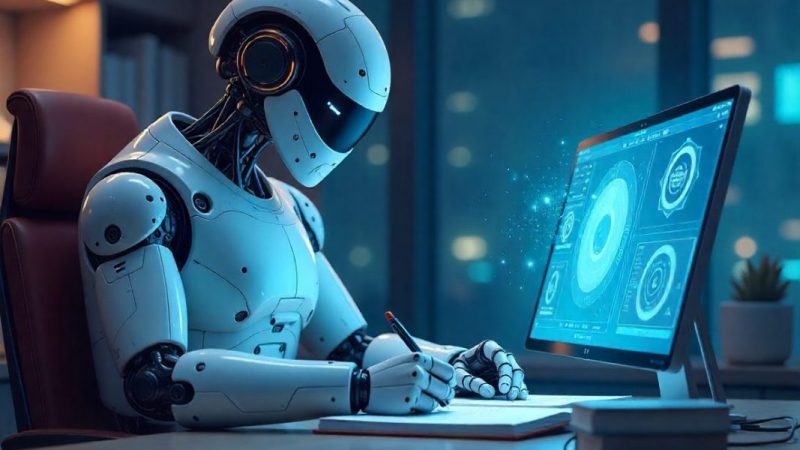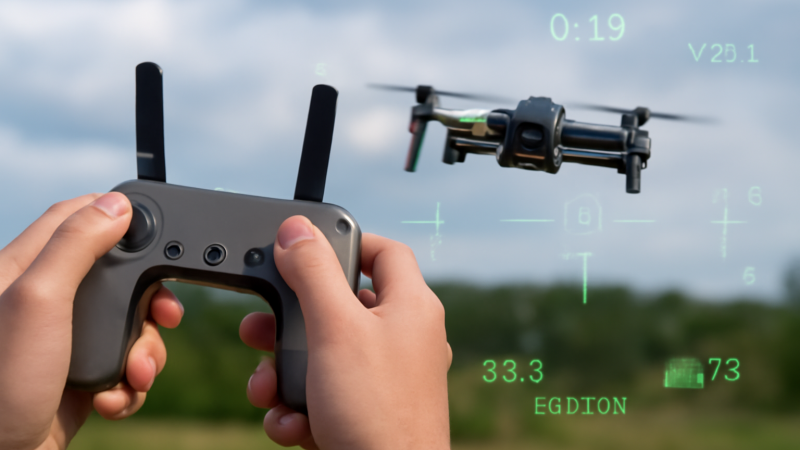The Future of AI Humanization in Creative Industries

Artificial Intelligence (AI) is rapidly transforming the creative industries by pushing the limits and promoting new definitions of art in humanity. In this high-performance race through the fourth industrial revolution, the humanization of AI has gained substantial traction.
In this article, the possibilities and challenges of AI in creative fields, along with the ethical implications, will be discussed, along with the implications arising for human creativity.
Understanding AI Humanizer and AI Humanization
So, what is AI Humanization?
AI humanization simply implies that the output from any AI is made more humanly relatable, intuitive, and resonant with the characteristics of humanity. An AI humanizer thus means a system or service that works by giving the ability to transform content produced by machines into objects of text or visuals drawn from a pool of human emotions. Such tools are becoming priceless in the world of creatives, which is, after all, all about human touch and relatability.
Using natural language processing (NLP), machine learning, and sentiment analysis, today’s AI systems make use of advanced technologies to produce content that no longer feel boringly mechanical but instead evoke human-like emotions. Thus, “humanizing” AI output, as it is sometimes called, greatly enhances user experience and provides a different angle between technology and creativity.
The Role of AI Humanization in Creative Fields
Art and Design
AI has opened new doors in art and design with the help of artists to make unique creations. GANs have enabled the computer to develop its visual compositions by adapting learned styles from its predecessors and combining them to form new compositions. Such artworks may then be completed with AI humanizer tools to convey particular feelings, thereby making the art more effective and relatable.
Moreover, AI also helps designers with nice page layout designs, color combinations that complement each other, and personalized design elements customized to users’ preferences.
Writing and Storytelling
The creative writing sphere is experiencing unprecedented advancements of AI-aided applications. Tools endowed with the capacity to humanize AI text are highly sought after here. For example, an AI would be able to write articles, poems, or scripts, but an AI humanizer guarantees that the content has emotional depth and satisfies the requirements of our humanness.
Apart from that, the creative process concerning storytelling could be enriched by spontaneous AI ideas, character dialogues, and even whole plot turns. Any such AI suggestion may be shaped by writers discovering some grains of truth within it without losing their individuality.
How AI is Shaping Music Composition
AI has the very capabilities of composing music. By detecting alterations in the melody, harmony, and rhythm of their creator’s milieu, AI is employed to create original works of various genres. Musicians can then cherry-pick AI to dabble in new styles or find inspiration. AI humanization tools will add the necessary emotional depth to make these compositions relatable to an audience.
For instance, AI can conjure melodies, while a human touch—nuances in tempo, dynamics, and phrasing—could make the music so much richer and appealing.
The Impact of AI on Film and Animation
The film and animation industries leverage AI to write scripts, storyboards, and do the visual effects. AI can then analyze successful storylines and suggest improvements or even create entirely new scripts. These outputs usually lack the emotional depth of the human story. Not to worry, tools to humanize the script will refine these to ensure that they resonate with the audience.
AI would execute complex processes in animation, such as character motion and texture, thereby saving time while keeping the quality. The humanizing AI technologies ensure that the animation feels organic and emotionally engaging.
Challenges in AI Humanization
The creative industries would benefit much more from AI, although challenges remain to be surmounted. Perhaps of prime concern is that of the creative artist’s being eclipsed, for there is a general feeling among those in the industry that as AI could generate audio, images, or texts, it would calamitously overshadow human artists and creators. It is vital to achieve a sure balance wherein AI is seen to be a complement and partner, rather than an adversary and competitor against human creativity.
The Ethical Issues
The ethical issues concerning the use of AI technology in creative industries cannot be ignored. Copyright violation, authorship, and accountability arise when AI-generated works are perceived to be too similar to the original ones. An AI text detector would help in setting apart the works created by humans unable to perform the human role, which assures transparency and secures copyright ownership.
Bias in AI-generated content certainly strikes as another major issue. Since AI-based programs are trained with existing sets of data, unfortunately, those data might sometimes harbor some preconceived notions, stereotypes, or some kind of bias. Thus it is imperative to have diversity and fairness to train the data, in order to work towards fairness and inclusion.
Opportunities for Collaboration
Humanization of AI allows for a based collaboration between humans and machines such as never before. By automating redundant tasks, AI enables the creator to work on innovative and experimental projects. Humanize tools facilitate the connection of the AI outputs with human creative abilities.
For example, an AI could allow the designer to choose the options the AI presents instead of designing from the beginning. Similarly, a budding author may use the AI-generated draft as a jumping-off point to add their unique voice and perspective.
Future Possibilities
The horizons filled with possibilities of the future of AI within the creative industries are truly thrilling. As technology progresses, AI systems will be poised to grow beyond the capability of human creativity. However, the job of AI humanization plays a pivotal role in ensuring that these outputs not only speak the mind but the heart as well.
Integration with Emerging Technologies
Creativity may one day take an entirely new form by linking AI with the likes of VR and AR. Imagine a VR world that has commonly everything, from landscapes to characters, generated and humanized by the AI in real time. The integration of AI tools for humanization and immersive technologies will redefine the course of storytelling and artistic expression.
Enhanced Personalization
AI’s knack for gauging user likes for quickly conceiving customized projects will revolutionize the consumer experience. The future of creativity is personalized content, from personalized music playlists to custom-done artwork. Humanize tools will ensure that the outputs are not only personalized but also emotionally engaging.
Conclusion
The future of the humanization of AI in creative sectors is promising and yet filled with challenges. While AI may provide opportunities for innovation unlike any others, it will always come hand in hand with ethical and creative challenges. By empowering tools like AI humanizer systems and ethical practices, it is even possible to apply that innovation to supplement human creativity instead of extinguishing it.
While changing futures unfold, the bond to foster is that between humans and AI. With the realization of an embrace of AI humanization, creativity may be taken into unknown territories, thereby setting boundaries toward a future that still carries the generic traits of human expressions. Even while integrating technologies such as the AI Text Detector provides transparency and trust along this transformative journey, it marks the dawn of a new era in which technology and humanity thrive.






